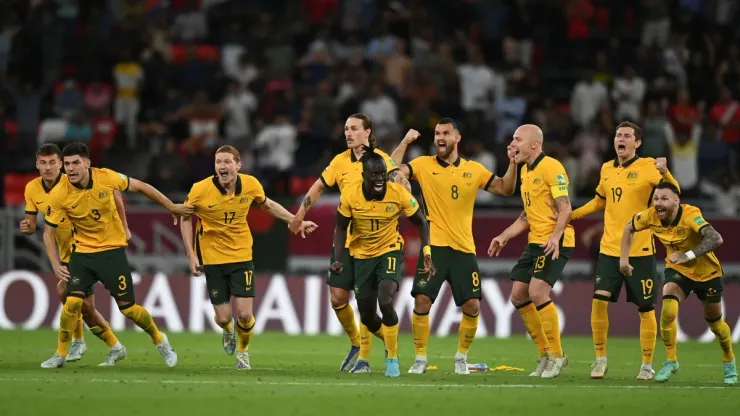Australia punched its ticket to World Cup 2022 in dramatic fashion in June. It was a prideful performance from the Aussies to get to a fifth-straight World Cup.
It was gritty to get there against Peru. Australia played the role of a plucky underdog with its back against the wall. Peru appeared all but set to return to the World Cup. Instead, Australians celebrated with euphoric emotion.
Take Australian Manager Graham Arnold, for example. His reaction to Andrew Redmayne’s final save was that of a stream of tears. The qualification is a huge moment for Graham, particularly given the pressure mounting with qualification struggles. Images of John Aloisi’s penalty against Uruguay in 2005 came flooding back. This year, national heroes emerged in a flash of glory created just like they were 17 years ago. In 2005, it was Aloisi, Cahill and Schwarzer. In 2022, it was Redmayne, Mabil and Hrustic.
However, after the dust settled from the parties, Australians such as myself soaked in what happened. At that time, a sobering reality overtook me. While the Australian squad is going to the World Cup, Australian soccer is at a standstill.
Going back to before kick-off against Peru, Australian soccer carried a pessimistic overtone. Not many Australian supporters, media or anyone else gave them much of a chance against Peru and with good reason. Australia’s put forth a dismal qualifying campaign.
Australia claws into World Cup 2022
Australia finished third in its group. The three-best teams reach the World Cup or the first playoff phase. Saudi Arabia topped the group, eight points ahead of the Aussies. Then, Japan was clear as well, seven points better than Australia. In fact, the Socceroos only finished one point better than Oman, a country with a population smaller than Sydney. Australia drew with China and Oman and lost three times to Japan and Saudi Arabia, combined.
The move from Oceania to Asia for Australia’s soccer came out of ambition. The side qualified for the 2006 World Cup and sought more competitive fixtures. In consequence, the standard of the sport in Australia improves. Validation came with Australia qualifying for each World Cup since then, along with the 2015 Asian Cup on home soil.
However, the top six teams in Asia based on the FIFA World Rankings are as follows. Iran (No. 23), Japan (No. 24), South Korea (No. 28) Australia (No. 39), Qatar (No. 49) and Saudi Arabia (No. 53). Australians believe they are closer to South Korea, Japan and Iran than the two behind them. In reality, Australia is considerably behind those three countries at the international level.
Improvement domestically
One of the reasons for this is the struggles of Australia’s domestic league. There is a legitimate argument that Japan, China, South Korea, Saudi Arabia and the UAE have better domestic leagues than Australia. The A-League must improve for Australia to enter the realm of the top-three nations for soccer in Asia.
The two main things that hold Australian football back domestically are their salary cap and the lack of promotion and relegation.
The salary cap deters big players on big salary’s from coming to play in Australia. This creates a level ceiling that young players coming up in Australia can play against. A young player in Australia might play against a 30-year-old journeyman who played in Europe’s top leagues sporadically. Meanwhile, a young player in China and Saudi Arabia is playing with world-class players seeking big-money moves. The argument for having a salary cap is that all the teams stay afloat and survive while the league stays competitive.
Here’s the catch, though. Only the teams within the league stay competitive in comparison to each other. The league as a whole doesn’t stay competitive, it falls behind.
Pro-Rel in Australia
The other factor of not having promotion and relegation is that there is no real incentive to improve. There is no drop awaiting if a club is not at its very best. It lets complacency seep in. Before you know it, finishing bottom of the league isn’t so. After all, you can just release all of your players and re-sign six more and try again next year. It also limits how many juniors and players we have playing at the highest level of football in Australia. People will argue we don’t have enough teams and stadiums and the standard will be poor but the thing is we have enough teams and stadiums and our professional league is poor and it will stay that way if we keep sleepwalking into mediocrity.
I was over the moon to see Australia qualify for the World Cup and I am extremely excited to watch Australia perform at the World Cup. The Socceroo’s are always punching above their weight in big tournaments. I just want to make sure that we qualify for the next big tournament and one way we can do that is to punch above our weight domestically as well.
PHOTO: Nikku/Xinhua via Getty Images
200+ Channels With Sports & News
- Starting price: $33/mo. for fubo Latino Package
- Watch Premier League, Women’s World Cup, Euro 2024 & Gold Cup
The New Home of MLS
- Price: $14.99/mo. for MLS Season Pass
- Watch every MLS game including playoffs & Leagues Cup
Many Sports & ESPN Originals
- Price: $10.99/mo. (or get ESPN+, Hulu & Disney+ for $14.99/mo.)
- Features Bundesliga, LaLiga, Championship, & FA Cup
2,000+ soccer games per year
- Price: $5.99/mo
- Features Champions League, Serie A, Europa League & Brasileirāo
175 Premier League Games & PL TV
- Starting price: $5.99/mo. for Peacock Premium
- Watch 175 exclusive EPL games per season






